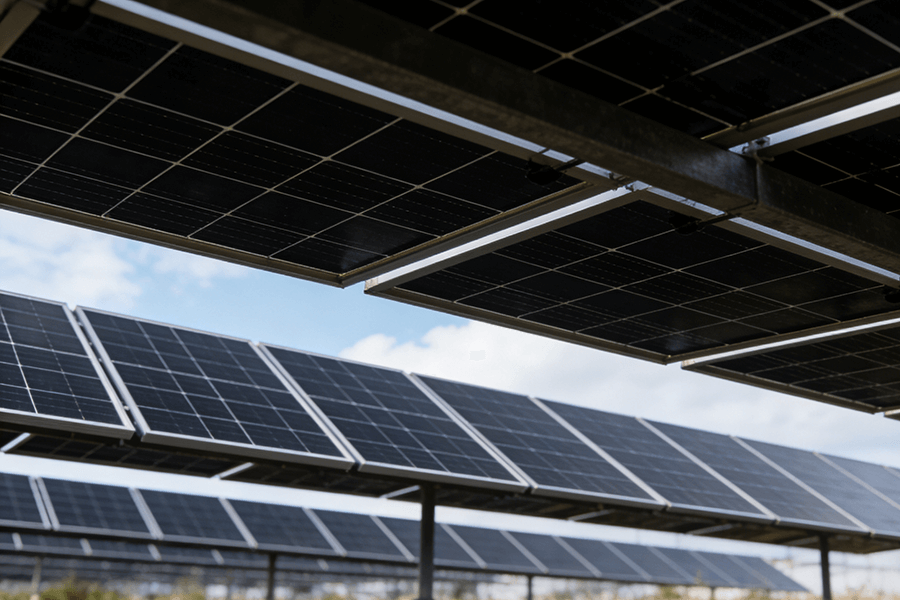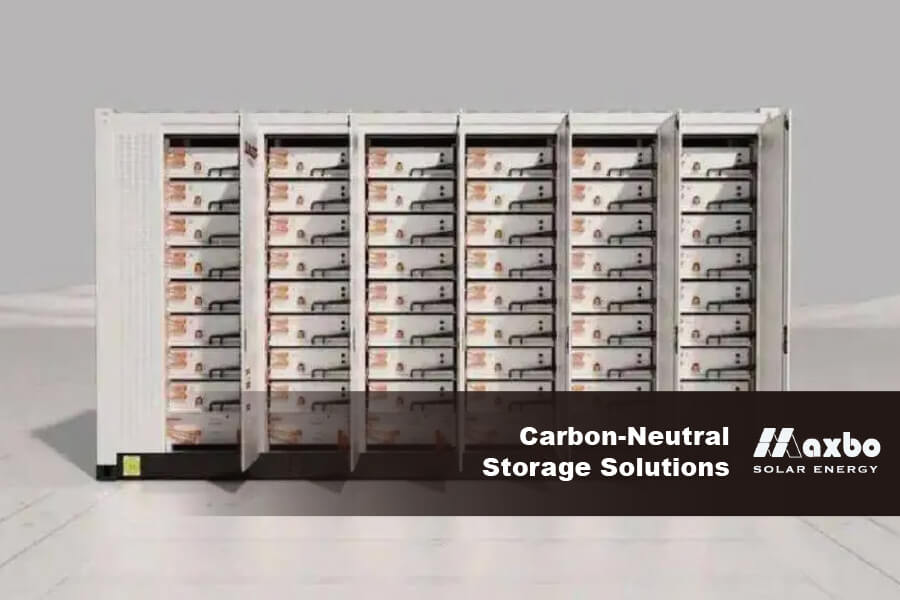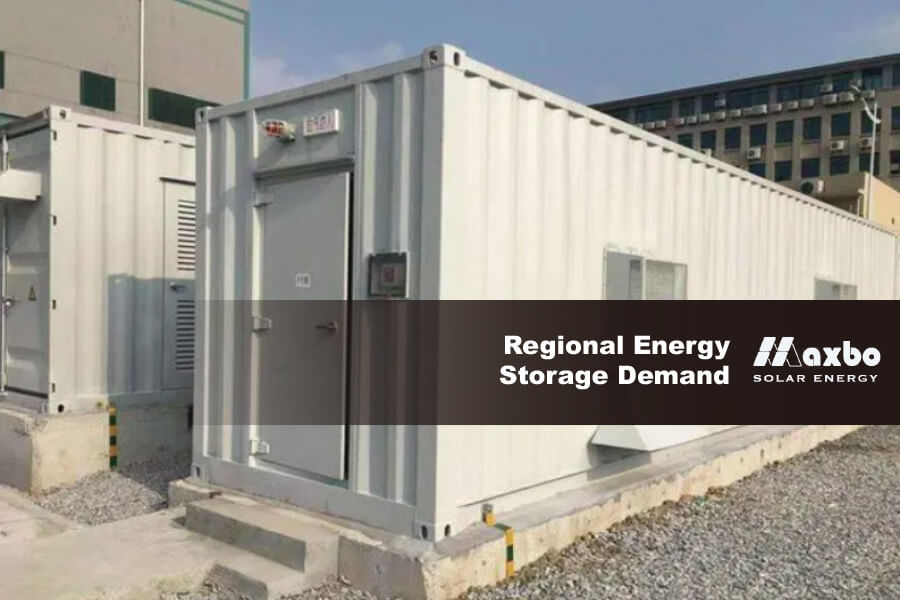At Maxbo, we understand that the success of your Battery Energy Storage System (BESS) hinges on both impeccable installation and diligent maintenance. As experts in the field, we offer the best practices and insights into BESS system installation and maintenance to ensure optimal performance and longevity of your investment. This guide provides a detailed look into every aspect of BESS system installation and maintenance, highlighting why it is crucial for energy efficiency and reliability.
Table of Contents
ToggleWhat is a BESS System?
A Battery Energy Storage System (BESS) is a critical component in modern energy management, designed to store excess energy for later use. Whether you are integrating a BESS with solar panels or another renewable source, understanding the nuances of BESS system installation and maintenance is key to maximizing its benefits.
Key Components of a BESS
Understanding the core components of a Battery Energy Storage System (BESS) is crucial to fully grasp the BESS System Installation and Maintenance process. Each component plays a vital role in ensuring the system operates efficiently, safely, and meets the energy demands of your home or business. Proper attention to these components during BESS System Installation and Maintenance ensures long-term performance and reliability. Below is an in-depth look at the key components involved in the system:
1. Batteries
The batteries are the heart of any BESS, storing electrical energy for later use. These storage units enable the system to capture energy from sources such as solar panels or wind turbines and discharge it when needed, such as during peak energy demand or outages. During BESS System Installation and Maintenance, the selection of the right battery type—typically lithium-ion or lead-acid—is essential to ensure the system’s efficiency and longevity.
- Lithium-ion batteries are favored for their high energy density, fast charging times, and long lifespan. They require precise installation and environmental management to prevent overheating, a key focus during BESS System Installation and Maintenance.
- Lead-acid batteries offer a cost-effective alternative and are often used in backup power solutions. However, they require proper ventilation during installation, as they can emit gases. Their ongoing maintenance involves monitoring electrolyte levels and ensuring they remain in optimal condition.
Regular battery maintenance, including monitoring charge cycles and ensuring proper cooling, is an integral part of the BESS System Installation and Maintenance process, helping to prolong the life of the storage system and ensure peak performance.
2. Inverters
Inverters are crucial for converting the stored DC energy in the batteries into AC power, which is the form of electricity used in homes and businesses. Ensuring proper inverter installation is a critical aspect of BESS System Installation and Maintenance since it directly impacts energy conversion efficiency and system stability.
- Inverters must be installed in line with the system design to optimize the flow of energy. Poor installation can lead to inefficiencies or damage to the system.
- During the BESS System Installation and Maintenance process, regular checks of the inverter’s cooling system, electrical connections, and software updates are necessary to maintain optimal performance and prevent energy losses.
The inverter is a key component in ensuring the effective use of stored energy, and its proper setup and ongoing maintenance are central to the success of the BESS System Installation and Maintenance process.
3. Energy Management System (EMS)
The Energy Management System (EMS) acts as the control center of the BESS, regulating the flow of energy within the system. The EMS plays a critical role during BESS System Installation and Maintenance by optimizing how and when energy is stored and discharged.
- It monitors energy generation, battery storage levels, and power demand, making real-time decisions to balance energy usage.
- During the BESS System Installation and Maintenance process, it’s essential to ensure that the EMS is correctly configured to meet the energy needs of the site and that it is regularly updated to maintain its efficiency.
Regular maintenance of the EMS involves software updates and system checks to ensure it is functioning properly, which is a key focus during BESS System Installation and Maintenance to maximize system performance and energy savings.
4. Charge Controllers
Charge controllers are vital components of a BESS, regulating the flow of energy into the batteries to prevent overcharging and ensure long-term battery health. Proper setup and calibration of charge controllers are important tasks during the BESS System Installation and Maintenance process.
- For systems integrated with renewable energy sources like solar, charge controllers ensure that the batteries receive the correct charge without being over- or under-charged, which could shorten battery life.
- During the BESS System Installation and Maintenance process, routine inspections of the charge controllers are necessary to confirm that they are functioning correctly and that they are adequately protecting the batteries.
Effective charge controller management is crucial for maintaining battery health, and regular maintenance during the BESS System Installation and Maintenance process ensures that the entire system operates efficiently and safely over time.
Benefits of Proper BESS System Installation and Maintenance
1. Enhanced System Efficiency
Proper BESS system installation and maintenance ensures that the system operates at peak efficiency. Incorrect installation can lead to energy losses and reduced performance. Regular maintenance helps to address any issues before they impact system efficiency.
Reference: U.S. Department of Energy – Energy Storage Systems
2. Increased Longevity of Equipment
The BESS system installation and maintenance process significantly impacts the lifespan of the equipment. Proper installation minimizes wear and tear, while regular maintenance prevents deterioration of components, extending the life of your system.
Reference: Clean Energy Council – Battery Storage Maintenance
3. Cost Savings
Investing in professional BESS system installation and maintenance can lead to significant cost savings. Proper installation minimizes the need for costly repairs, while regular maintenance ensures the system operates efficiently, reducing energy costs over time.
Reference: EnergySage – Cost Benefits of Energy Storage
4. Improved Safety
Safety is a top priority in BESS system installation and maintenance. Correct installation practices and regular maintenance checks help prevent potential safety hazards such as electrical faults or battery malfunctions.
Reference: International Renewable Energy Agency – Safety in Energy Storage
5. Compliance with Regulations
Proper BESS system installation and maintenance ensures compliance with local regulations and standards. This is essential for avoiding legal issues and ensuring that your system meets all necessary safety and performance criteria.
Reference: European Commission – Energy Storage Regulations
The Process of BESS System Installation
1. Site Assessment and Planning
Before installing a Battery Energy Storage System (BESS), conducting a comprehensive site assessment is critical. This process involves evaluating several key factors to determine the best possible location and configuration for the system. The site assessment includes an in-depth analysis of available space, the existing electrical infrastructure, and the environmental conditions that may affect system performance. For instance, the physical space must be adequate to house the batteries and associated equipment, while the electrical infrastructure should support efficient energy flow without requiring major upgrades. Environmental factors such as temperature, humidity, and exposure to the elements also play a significant role in ensuring the longevity and reliability of the BESS.
Conducting this thorough assessment ensures that the system will be installed in the optimal location and configured to meet specific site requirements. It minimizes potential operational issues down the road and lays the foundation for a successful installation and long-term performance of the energy storage system.
Reference: SolarPower Europe – Site Assessment for Energy Storage
2. System Design
After the site assessment is complete, the next crucial step is system design. The design process involves developing a detailed plan that includes the precise layout and configuration of batteries, inverters, and other essential components. The design must also take into account how the BESS will be integrated with existing solar or other power systems. Key considerations during this phase include the electrical load, energy storage capacity requirements, and future scalability of the system.
In designing a BESS, it’s essential to ensure that the system is not only efficient but also optimized for the specific energy needs of the site. Engineers work to ensure that the system design aligns with local regulations and standards, while also considering long-term maintenance and operational costs. Proper system design is vital to maximizing the energy efficiency and cost-effectiveness of the storage solution.
Reference: Fraunhofer ISE – System Design and Integration
3. Professional Installation
Once the system design is finalized, the next step is the professional installation of the BESS. This involves setting up and connecting all components, including the batteries, inverters, wiring, and safety devices, according to the design specifications. Installation must be carried out by skilled technicians with expertise in both electrical systems and energy storage technology. This ensures that the BESS is properly integrated with any existing solar power or energy infrastructure, providing a seamless flow of energy.
The installation process includes securely mounting the equipment, connecting electrical components, and ensuring that all safety features are in place. Proper installation is crucial not only for the safe operation of the system but also for its long-term performance and reliability. A professional installation reduces the risk of potential malfunctions and ensures that the BESS operates at peak efficiency from day one.
Reference: Electrek – Professional Installation Services
4. System Testing and Commissioning
After the BESS is installed, the system must undergo comprehensive testing and commissioning to ensure that all components are functioning correctly and that the system meets performance standards. This involves running a series of tests, including performance verification, safety checks, and final adjustments to optimize the system’s operation. During this phase, technicians evaluate the battery’s charge and discharge cycles, check the inverters, and ensure that the system communicates effectively with the existing energy infrastructure.
Testing also includes verifying that the system complies with local safety and performance regulations. Any issues that arise during the commissioning phase are addressed before the system goes live. Once testing is complete, the BESS is officially commissioned and ready for full operation. Proper testing and commissioning are essential to ensuring the long-term reliability, safety, and efficiency of the energy storage system.
Reference: KfW Bank – Testing and Commissioning
Ongoing Maintenance for BESS Systems
1. Regular Inspections
Regular inspections are a crucial part of BESS system maintenance. These inspections help identify and address potential issues before they impact system performance. Key areas include battery health, inverter functionality, and overall system integrity.
Reference: PV Magazine – Routine Inspections
2. Battery Maintenance
Batteries require regular maintenance to ensure optimal performance. This includes checking charge levels, cleaning terminals, and monitoring for any signs of wear or degradation.
Reference: U.S. Department of Energy – Battery Maintenance
3. Firmware and Software Updates
The Energy Management System (EMS) and other components may require firmware and software updates to enhance performance and security. Keeping software up-to-date is a key part of BESS system maintenance.
Reference: European Commission – Software Updates and Energy Storage
4. Troubleshooting and Repairs
In the event of any issues, prompt troubleshooting and repairs are essential. This ensures that any faults or malfunctions are addressed quickly to minimize downtime and maintain system efficiency.
Reference: Clean Energy Council – Troubleshooting and Repairs
5. Documentation and Records
Maintaining detailed records of BESS system installation and maintenance activities helps track performance, manage warranties, and ensure compliance with regulatory requirements.
Reference: International Renewable Energy Agency – Documentation Best Practices
Why Choose Maxbo for Your BESS System Installation and Maintenance
At Maxbo, we offer comprehensive services for BESS system installation and maintenance. Our factory-direct solutions ensure high-quality components and expert installation, backed by ongoing support and maintenance. Here’s why Maxbo is your best choice:
Maxbo’s Expertise
At Maxbo, our expertise in energy storage goes beyond simply providing products—we deliver comprehensive solutions designed to meet the unique needs of our clients. As one of the best energy storage system providers 2024, we are committed to offering high-quality Battery Energy Storage Systems (BESS) that combine cutting-edge technology with reliable performance. Our approach encompasses everything from the design and manufacturing of top-tier systems to seamless installation and ongoing support, ensuring that our customers experience the full benefits of energy storage.
Factory-Direct Solutions
One of the key advantages of choosing Maxbo is our factory-direct approach. By manufacturing our BESS systems in-house, we maintain strict control over the entire production process, from sourcing materials to final assembly. This ensures that every system we deliver meets the highest standards of quality and reliability.
Additionally, by cutting out middlemen, we are able to offer competitive pricing without compromising on performance. Our customers benefit from the best of both worlds: superior BESS technology at a cost-effective price point. This factory-direct model is one of the reasons Maxbo stands out as one of the best energy storage system providers 2024, offering unparalleled value to both residential and commercial clients.
Professional Installation
Maxbo’s commitment to quality extends to our installation services. We recognize that even the most advanced energy storage system needs to be installed correctly to function at its best. Our team of skilled and certified technicians ensures that every BESS system is installed flawlessly, with careful attention to integration with your existing energy infrastructure.
Whether it’s a residential installation to complement a rooftop solar system or a large-scale commercial setup designed to support peak load management, our professionals handle the process with precision and care. Proper installation is crucial for maximizing the efficiency and longevity of any BESS system, and it’s this attention to detail that makes Maxbo one of the best energy storage system providers 2024.
Ongoing Maintenance
Energy storage systems are long-term investments, and maintaining their efficiency and safety is crucial for getting the most out of them. Maxbo offers comprehensive maintenance services designed to keep your BESS system running smoothly over time. From routine inspections to preventative maintenance and system upgrades, our team provides ongoing support to ensure optimal performance.
Our maintenance services are not only about fixing issues but also about anticipating potential problems before they arise, minimizing downtime and maximizing system longevity. This proactive approach to maintenance is one of the reasons Maxbo is recognized as one of the best energy storage system providers 2024, ensuring that our clients’ systems remain efficient and safe throughout their lifecycle.
Custom Solutions
No two energy needs are exactly the same, and at Maxbo, we understand the importance of offering customized energy storage solutions. Whether you are a homeowner looking to optimize solar energy storage or a large commercial operator needing to manage peak energy demand, we tailor our solutions to meet your specific requirements.
Our team works closely with clients to design BESS systems that match their energy usage patterns, budget, and sustainability goals. By customizing each solution, we ensure that our clients get the maximum benefit from their investment in energy storage. This flexibility and customer-focused approach are key factors that make Maxbo one of the best energy storage system providers 2024, providing solutions that are as unique as the customers we serve.
Explore our BESS offerings and learn more about our comprehensive services at Maxbo Solar.
Conclusion: The Importance of BESS System Installation and Maintenance
Understanding the BESS system installation and maintenance process is crucial for maximizing the benefits of your energy storage system. Proper installation ensures optimal performance, safety, and compliance, while regular maintenance keeps the system running smoothly and efficiently. Maxbo is committed to providing the best solutions and support for all your BESS needs.
For more information on BESS system installation and maintenance, and to explore our range of products, visit Maxbo Solar.
BESS System Installation and Maintenance BESS System Installation and Maintenance BESS System Installation and Maintenance
References:
- U.S. Department of Energy – Energy Storage Systems
- Clean Energy Council – Battery Storage Maintenance
- EnergySage – Cost Benefits of Energy Storage
- International Renewable Energy Agency – Safety in Energy Storage
- European Commission – Energy Storage Regulations
- SolarPower Europe – Site Assessment for Energy Storage
- Fraunhofer ISE – System Design and Integration
- Electrek – Professional Installation Services
- KfW Bank – Testing and Commissioning
- PV Magazine – Routine Inspections
Related Solutions
Related Blogs
European Logistics Park BESS Container: Powering E-Mobility, Slashing Bills & Keeping Operations On Track
行政2025-12-08T17:00:20+08:00December 8th, 2025|Categories: Design, News|
SiC-Powered BESS Container Europe: Turbocharging Grid Resilience After the 2025 Spain-Portugal Blackout
行政2025-12-08T16:59:15+08:00December 8th, 2025|Categories: Design, News|
Let’s Make Things Happen
Add notice about your Privacy Policy here.
Let’s Make Things Happen
”The Maxbo team of sales consultants will continue to enrich our own expertise and experience to empower the development of sustainable energy with rigor.“
Maxbo CEO
You will need to provide: 1. the amount of electricity used. 2. the type and power of the load. 3. the electricity consumption habits (daytime/nighttime consumption). 4. the need to store electricity. 5. the need to feed electricity to the mains. 6. drawings or address of the installation site. 7. other special requirements
We can provide you with a quotation, a specification for all products, a circuit connection diagram and a diagram of the installation and placement of the PV panels. Any other requirements and adjustments needed can be discussed with our team.
We can meet the needs of most scenarios, whether your application is for domestic, commercial and industrial use, in remote areas, or for grid-level energy storage, we have experienced colleagues to design and deliver the right solution.
Add notice about your Privacy Policy here.
How much solar power do I need?
Most homes need 5–12kW, depending on your energy use and location.
Off-grid vs. grid-tied — what’s the difference?
Off-grid works without the utility grid; grid-tied lets you sell extra power back.
Do I need permits?
Usually yes — check local rules or ask us for guidance.
How long does a battery last?
Depends on size and load. A 5kWh battery can power a fridge for about 40 hours.
Can I upgrade my system later?
Yes, our systems are modular and easy to expand.
Does Maxbo offer installation?
We ship globally and connect customers with trusted local installers.










